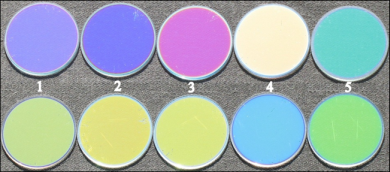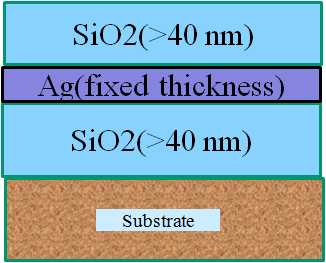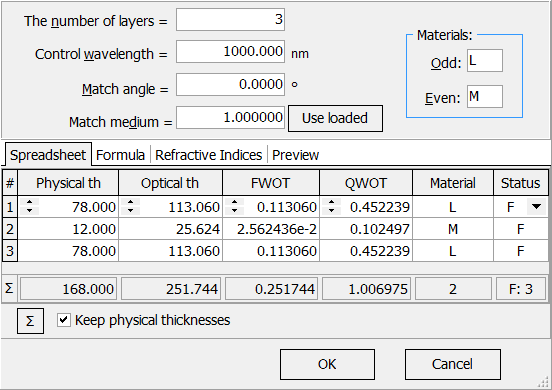| For advanced users Gradual Evolution procedure (alone or in combination with other OptiLayer tools) provides a variety of design options, especially for problems with specific requirements. Here we present only one example. We design multilayer coatings reflecting different colors from their front and back sides (see upper and lower rows of the right pane picture). |  |
 |
Materials: TiO2, SiO2 and SiO2-Ag sandwich (see left pane).
Due to specific optical properties of SiO2-Ag sandwiches and technological reasons, design is to satisfy the following requirements:
|
| Starting design – 3-layer sandwich with thicknesses of SiO2 layers are 78 nm and thickness of Ag layer is 12 nm. The choice of the starting design is explained by the fact that we carefully characterized Ag layers in such sandwiches and knew dependencies of their refractive index and extinction coefficients not only on the wavelength but on film thickness.
Thicknesses of layers in the starting design have status F (Fixed).
|
 |
 |
In the course of the Gradual Evolution the layers can be inserted either near the substrate or near the incidence medium, but not into the sandwich (put the mouse on the picture)
|
 |
After Constrained Optimization step the color performance is improved (see the picture on the left).
|
See the details in our publications:
|
|
Look our video examples at YouTube
OptiLayer videos are available here:
Overview of Design/Analysis options of OptiLayer and overview of Characterization/Reverse Engineering options.
The videos were presented at the joint Agilent/OptiLayer webinar.